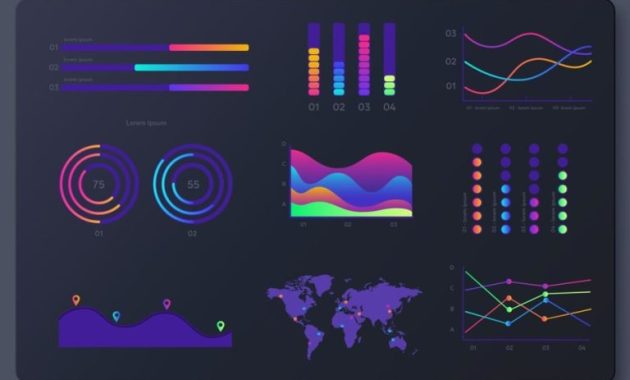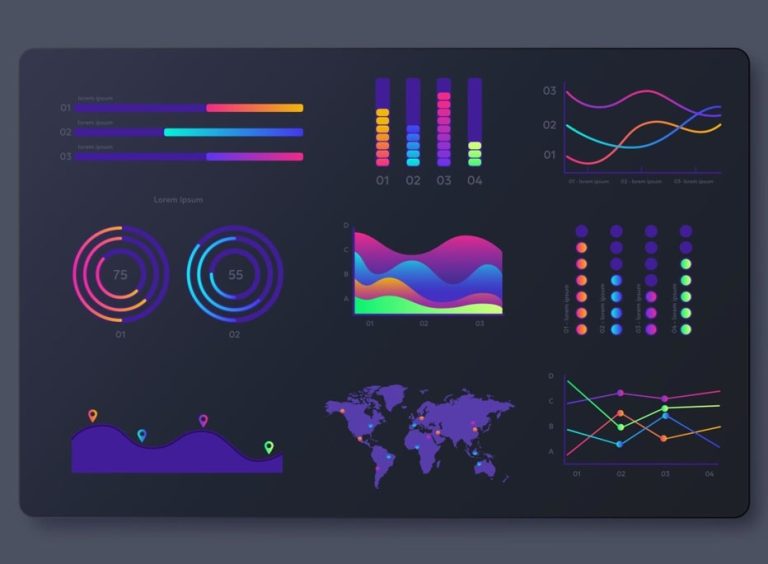
How 9 Business Intelligence Tools Can Maximize Your ROI
In today’s data-driven landscape, businesses are swimming in information. The challenge isn’t just collecting this data; it’s understanding it. This is where Business Intelligence (BI) tools become indispensable. They transform raw data into actionable insights. These insights enable companies to make informed decisions, optimize operations, and ultimately, boost their Return on Investment (ROI). This article explores nine powerful BI tools and how they can help you maximize your ROI.
Understanding the Power of Business Intelligence
Business Intelligence is more than just reporting. It’s a strategic approach to data analysis. BI tools gather, analyze, and present data in a way that supports decision-making. They empower businesses to:
- Identify trends and patterns.
- Monitor key performance indicators (KPIs).
- Gain a competitive edge.
- Improve operational efficiency.
- Predict future outcomes.
Implementing BI tools is an investment. However, the potential for increased ROI is significant. By leveraging these tools, businesses can make data-backed decisions. This leads to better resource allocation, reduced costs, and increased revenue. Furthermore, BI tools facilitate a culture of data-driven decision-making. This fosters continuous improvement and innovation.
Top 9 Business Intelligence Tools to Consider
1. Microsoft Power BI
Microsoft Power BI is a leading BI tool. It offers a user-friendly interface and robust features. Power BI excels in data visualization and interactive dashboards. It integrates seamlessly with other Microsoft products. This makes it a popular choice for businesses already using the Microsoft ecosystem. Power BI’s pricing is also competitive. This makes it accessible to businesses of all sizes. Power BI allows for data integration from various sources. This provides a comprehensive view of the business. It also supports advanced analytics and reporting.
2. Tableau
Tableau is another industry leader in BI. It is renowned for its data visualization capabilities. Tableau’s drag-and-drop interface makes it easy to create compelling dashboards. It is a powerful tool for exploring data and uncovering insights. Tableau offers a wide range of data connectors. This enables users to connect to various data sources. It is particularly strong in handling large datasets. Tableau’s focus is on visual storytelling. This helps users communicate their findings effectively. Tableau’s robust features make it suitable for complex data analysis.
3. Qlik Sense
Qlik Sense offers a unique associative data model. This allows users to explore data in new ways. Qlik Sense identifies relationships between data points. This helps users discover hidden insights. Its user-friendly interface and self-service BI capabilities are noteworthy. Qlik Sense’s data preparation tools simplify data wrangling. It also supports advanced analytics and data governance. Qlik Sense allows for real-time data updates. This ensures that users always have access to the latest information. Qlik Sense is a good choice for businesses needing in-depth data exploration.
4. Sisense
Sisense is a BI platform designed for complex data analysis. It can handle large volumes of data. Sisense offers a powerful in-memory data engine. This enables fast query performance. It provides a variety of data visualization options. Sisense is often used by larger enterprises. It’s well-suited for organizations needing advanced analytics. Sisense supports embedding dashboards into other applications. This enhances collaboration and data sharing. Sisense is known for its scalability and performance.
5. Domo
Domo is a cloud-based BI platform. It offers a comprehensive suite of features. Domo provides real-time data insights. It is designed for collaboration and data sharing. Domo is particularly strong in mobile BI. This allows users to access data from anywhere. It supports a wide range of data integrations. Domo’s interface is intuitive and easy to use. It offers various pre-built connectors. This helps users quickly connect to their data sources. Domo is a good option for businesses needing a collaborative platform.
6. Looker (Google Cloud)
Looker is a data analytics platform now part of Google Cloud. It focuses on data modeling and governance. Looker empowers businesses to create consistent data definitions. It supports advanced analytics and custom dashboards. Looker’s data modeling capabilities allow for complex analyses. It integrates seamlessly with Google Cloud services. This makes it a good choice for organizations using GCP. Looker is known for its robust data governance features. This ensures data accuracy and consistency. It is suitable for businesses with complex data needs.
7. SAP Analytics Cloud
SAP Analytics Cloud is a cloud-based BI solution from SAP. It offers a wide range of features. SAP Analytics Cloud integrates with other SAP products. It supports planning, predictive analytics, and business intelligence. It is designed to streamline decision-making. SAP Analytics Cloud allows users to create interactive dashboards. It also provides robust reporting capabilities. It’s a strong option for businesses already using SAP solutions. SAP Analytics Cloud is a good choice for enterprise-level BI.
8. Zoho Analytics
Zoho Analytics is a self-service BI and analytics software. It is designed for small to medium-sized businesses. Zoho Analytics offers a user-friendly interface. It supports data integration from various sources. It provides a wide range of data visualization options. Zoho Analytics is known for its affordability and ease of use. It offers pre-built connectors for popular applications. This makes it easy to connect to data sources. Zoho Analytics is a good option for businesses seeking an accessible BI solution.
9. MicroStrategy
MicroStrategy is an enterprise BI platform. It offers a comprehensive suite of features. MicroStrategy supports mobile BI and real-time data analysis. It is designed for large organizations with complex needs. MicroStrategy provides advanced analytics capabilities. It is known for its scalability and security features. MicroStrategy is a good choice for businesses needing a robust BI solution. It supports a wide range of data sources and integrations.
How to Choose the Right BI Tool for Your Business
Choosing the right BI tool requires careful consideration. First, assess your business needs. Determine what data you need to analyze. Identify your key performance indicators (KPIs). Consider the size of your business. Evaluate your budget. Think about your team’s technical skills. Research the features of each tool. Compare pricing and support options. Consider the tool’s scalability. Read reviews from other users. Start with a pilot project. This lets you test the tool before a full implementation. [See also: How to Choose the Right Business Intelligence Tool]
Maximizing ROI with Business Intelligence Tools
The ultimate goal of implementing BI tools is to maximize ROI. Here’s how to achieve this:
- Define clear goals: Identify the specific business objectives you want to achieve.
- Choose the right tool: Select a tool that aligns with your needs.
- Implement effectively: Ensure proper data integration and training.
- Monitor performance: Track your KPIs and measure the impact of the tool.
- Iterate and improve: Continuously refine your BI strategy.
By following these steps, you can harness the power of BI tools. This leads to data-driven decision-making and increased ROI. Business intelligence tools are essential for modern businesses. They help uncover valuable insights. They enable better decision-making. They boost ROI. These nine tools offer powerful capabilities. They empower businesses to thrive in today’s data-rich environment. Choosing the right business intelligence tool is crucial. It unlocks its full potential. Use these business intelligence tools to make the best decisions. Businesses can significantly improve their ROI. Evaluate the features of each business intelligence tool. Select the one that fits your business needs. This will provide the best ROI. The right business intelligence tools can transform your business. They enable data-driven decisions. They help maximize your ROI. Investing in business intelligence is an investment in your future. It is a key factor in maximizing ROI. Understanding how to use business intelligence tools is important. This helps businesses achieve a high ROI. Choosing the correct business intelligence tools is key. This will help maximize ROI.
Conclusion
In conclusion, business intelligence tools are critical. They help businesses thrive. They enable data-driven decisions. They are essential for maximizing your ROI. Select the right tool for your needs. Implement it effectively. Continuously monitor performance. This will help you achieve your business goals. By leveraging the power of BI, you can unlock valuable insights. You can optimize your operations. You can boost your bottom line. The right business intelligence tools can transform your business. It helps you achieve a higher ROI. [See also: The Future of Business Intelligence]

